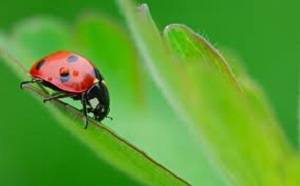Army of LadyBugs
Ladybugs are a preferred choice of many who engage in “bug warfare” to rid their indoor garden of pests. These predators like to feed on many different soft-bodied insects.
They will eat insects such as mealybugs, spidermites, the Colorado Potato Beetle and the European Corn Borer but aphids are their main source of food. One larva can eat about 400 aphids. One adult can consume about 5,000 aphids in it’s lifetime.

I’ve used these critters in the past to help me keep my plants free from pests. I believe they can do a good job but there are some rules to follow if you want them to be effective.
In this short article I’ve outlined a few rules to help you use them effectively if you decide that this form of pest control might be the right choice for your indoor garden.
Following these rules, will help you to create a useful battle plan to help keep your indoor garden pest free.
Rules for Releasing LadyBugs:
I think most people are interested in using ladybugs so that they don’t have to use pesticides on their precious plants.
Ladybugs are a good choice in battling bugs in your indoor garden, but I feel I should point out that it’s not a good idea to use ladybugs in your garden if you also plan to use pesticides like neem oil and insect soap as they can also kill your ladybugs. Which brings us to our first rule.
Rule 1). Don’t use pesticides if you plan to use ladybugs for your indoor garden.
Ladybugs tend to crawl more than fly in colder temperatures so an overnight stay in the fridge will help them to want to crawl around for in the garden as they warm up, which might help them to convince them to stay a while.
Rule 2.) Especially in the warm months, chill the ladybugs in the fridge before releasing them.
Ladybugs navigate by the light, and they tend to fly away when it gets too warm in your indoor garden. In the evenings and early mornings they tend to stay put, so try to make sure the garden is at the right temperature before releasing them.
Rule 3.) Only release ladybugs after sun down or before sun-up.
This brings us to the next rule. They like to have water to drink and it helps them to stick to the plants as they crawl around. This is important, as they will fly elsewhere not only if it’s too warm, but also if their needs for food and water aren’t met in your garden.
Rule 4.) Make sure to spray plants with water before releasing your ladybugs.
It’s important not to get them too excited before releasing them as this will increase the chances of them wanting to fly away before they’ve had a chance to deal with the pests in your garden. You want them to wander out of their container on their own when they are ready.
Rule 5.) Don’t shake the bag or container to encourage them to vacate their confinement; place the open bag on the ground beside the infested plants.
More important LadyBug Rules:
As I’ve mentioned in a previous post, I’ve noticed from my experience that ladybugs work better as a preventative measure.
If you already have a serious infestation, it might be a better idea to use the appropriate pesticide for your situation. However, if you decide to use them on severely infested plants, drape a thin sheet over the plant and release them underneath. This will help to ensure that they find the unwanted pests and increase the chances that they will engage the enemy.
As you have probably noticed, the most difficult thing to deal with when it comes to this form of pest control in your indoor garden, is the tendency they have to want to fly away.
All of these rules are designed to help you create the right conditions to convince them to stay in your garden. If you can accomplish this for any length of time, you will find that ladybugs can be a formidable opponent to combat the pests that threaten your garden.
Well that’s a few quick points to help you design a battle plan to rid your garden of pests. Hopefully this will help you to decide if ladybugs will be the right choice for you.
Happy Growing!
The least amount I have seen sold is 150 ladybugs. Is that too many for indoors. We have 3 aero gardens and one large one. We are having trouble with aphids. Will castile soap mixed with vinegar and water hurt a ladybug.
150 ladybugs is not very many. They tend to not want to hang around and they will try to fly away so the more the better. I would not use any type of insecticide with ladybugs as it will give them even more reason to fly away. Try using Pyrethrum spray instead.